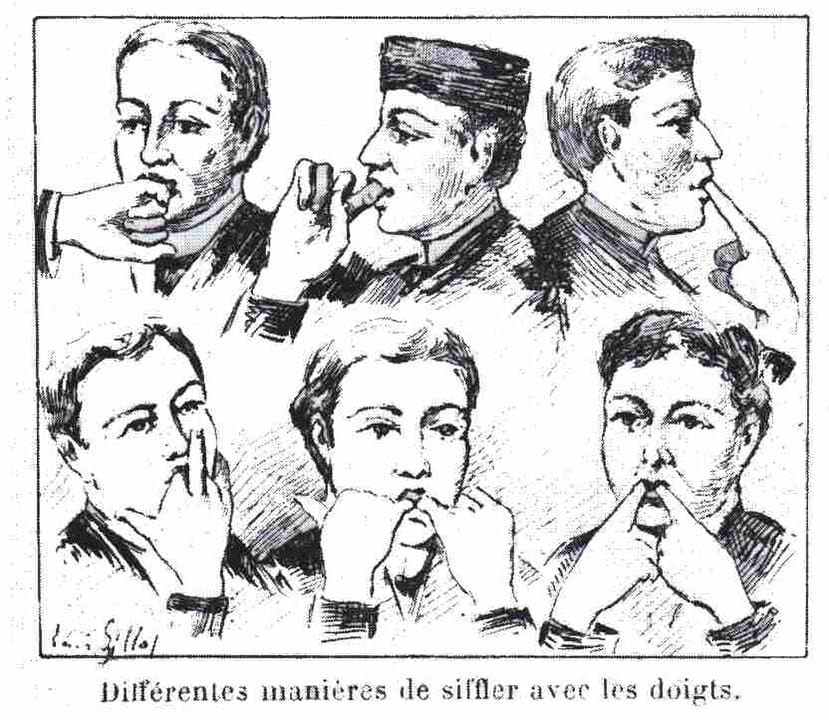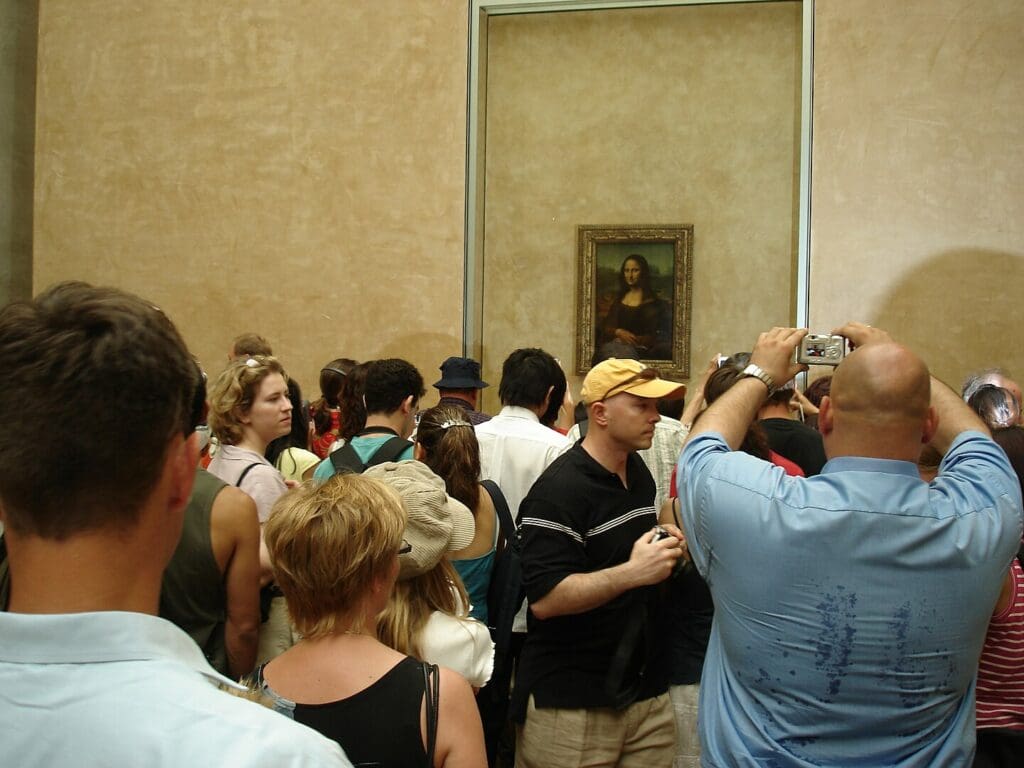50 Most Infamous Taboos From Around the World
In a world where diversity thrives, so do the enigmatic customs and traditions that define each culture. These customs often encompass the intriguing realm of taboos, the unspoken boundaries that shape our behavior. Our journey takes us through 50 of the most infamous taboos across the globe, from public nudity to cannibalism, belching etiquette to pet preferences, and alcohol prohibitions to prohibitions on discussing sex – these taboos reveal the intricate tapestry of human behavior and beliefs across the globe. Together, we unravel the cultural tapestry that binds human societies, understanding how these taboos have shaped our understanding of respect, symbolism, and the passage of time. Join us on this captivating journey to demystify the forbidden. Let’s get started;
1. Incest
In our society, there are norms and moral boundaries surrounding the topic of incest. These norms exist across cultures. Serve as a shared agreement; sexual relationships, between close relatives are universally considered unacceptable.
This longstanding taboo plays a role in maintaining order and strong family connections. By prohibiting relationships societies show their commitment, to preserving the sanctity of bonds while also safeguarding against potential genetic and emotional complexities.
Although the specific definition of ” relatives” may vary this collective stance emphasizes the importance of respecting these boundaries that have shaped our relationships and communities for generations.
2. Cannibalism

Jan van Kessel the Elder, Public domain, via Wikimedia Commons
The act of cannibalism which is both eerie and disturbing has long been considered one of the ingrained social taboos throughout human history. Across cultures and time periods, there is an agreement that consuming human flesh is a repugnant violation.
This universal aversion, to cannibalism goes beyond geographical boundaries. Reflects a core belief in the value and sanctity of life. The taboo against cannibalism is deeply rooted in our desire to preserve dignity, uphold principles, and collectively reject the horrifying violation of the human body.
It serves as a reminder of our shared commitment to honor and safeguard the worth of every individual uniting us in our abhorrence, towards this practice.
3. Public nudity
The concept of public nudity paints a vivid picture of how cultural norms and personal liberties intersect. While some societies embrace the freedom to bear it all in designated contexts, others find it deeply offensive.
This stark dichotomy underscores the rich tapestry of global customs and moral standards. In cultures where public nudity is accepted, it symbolizes a celebration of human form, a connection to nature, and a challenge to societal prudishness.
In contrast, societies that deem it offensive view such displays as a breach of decorum, and modesty, and an affront to the shared values of privacy. The differing attitudes toward public nudity serve as a compelling reminder of the intricate interplay between personal freedoms and the societal boundaries that shape our world.
4. Burping and farting
The innocuous bodily functions of burping and farting, though universal experiences, unveil the fascinating spectrum of politeness norms across cultures. While some societies dismiss these natural occurrences with humour or indifference, others staunchly label them as impolite and offensive.
In cultures where such acts are met with mirth, they signify a nonchalant acceptance of human imperfections, a shared recognition of our common humanity.
Conversely, in more reserved societies, they are considered disruptive breaches of decorum and deemed disrespectful to those present. These disparities in politeness norms underscore the dynamic interplay between our biological realities and the intricate web of social expectations and etiquettes that shape our daily interactions.
5. Eating specific animals
Contrarily, in certain Indian cultures, the reverence for cows runs deep, rendering their consumption a profound taboo. This stark divergence in culinary customs underscores the intricate relationship between culture and cuisine.
The values, beliefs, and historical context of a society shape their perception of what is edible and what is not, illustrating how food transcends mere sustenance to become a profound symbol of cultural identity and moral boundaries.
The taboos surrounding the consumption of these animals serve as a testament to the power of cultural diversity and the deeply ingrained significance of what we choose to eat.
6. Drinking alcohol

Image by Michal Jarmoluk from Pixabay
These abstinences often stem from religious or moral convictions, with strict adherence to these proscriptions seen as a testament to one’s commitment to faith or societal values. The absence of alcohol in these cultures symbolizes a deeper commitment to sobriety, temperance, and the preservation of spiritual or moral purity.
The contrasting attitudes toward alcohol consumption highlight the profound influence of religious and ethical beliefs on our relationship with this ubiquitous beverage, offering a vivid reflection of how cultural norms shape our lifestyles.
7. Pork consumption
In Islamic and Jewish cultures, the consumption of pork stands as a prominent and enduring taboo. Both faiths prohibit pork consumption, considering it ritually impure. For Muslims, the Quran explicitly forbids pork consumption, while in Judaism, the Torah similarly condemns it.
This shared abstinence underscores the deep-seated spiritual convictions and reverence for dietary laws in these traditions. The taboo against pork consumption represents a profound commitment to purity, obedience to religious texts, and an unwavering adherence to centuries-old dietary restrictions.
It serves as a reminder of the enduring influence of religious beliefs on everyday choices, emphasizing the significance of maintaining ritual purity and upholding the tenets of faith in these respective cultures.
8. Public Displays of Affection (PDA)

Image by Alice Bitencourt from Pixabay
Public Displays of Affection (PDA) illustrate the vast spectrum of cultural norms and societal attitudes toward romantic expression. What is deemed appropriate varies significantly from culture to culture.
In some societies, holding hands, hugging, or kissing in public is seen as a natural and cherished manifestation of love. Contrastingly, in more conservative or reserved cultures, such acts may be met with discomfort or considered impolite.
These differences reflect the complex interplay between tradition, values, and individual liberties. PDA norms serve as a poignant reminder of the diverse ways societies define and celebrate affection, showcasing the beauty of a world where love is expressed in a multitude of ways, each deeply rooted in its unique cultural context.
9. Discussing Sex
Open discussions about sexual matters, or the lack thereof, reveal the intricate interplay between cultural norms and societal attitudes. In some cultures, there exists a prevailing reticence towards discussing sex openly.
Conversations on sexual topics are often considered private and off-limits, stemming from a combination of historical traditions, modesty, and a desire to shield younger generations from explicit content.
These cultures prioritize discretion, emphasizing the importance of maintaining a decorous public discourse. Such avoidance of open discussions about sex underscores the profound influence of social conservatism and the role of cultural mores in shaping how we address intimate matters, reflecting the diversity in attitudes and values across the global cultural landscape.
10. Touching someone’s head
In many Southeast Asian cultures, the act of touching someone’s head is laden with a profound significance, albeit one that leans toward the disrespectful. The head is regarded as the highest and most spiritually significant part of the body, and by extension, a sacred repository of one’s soul and individuality.
Thus, touching someone’s head is seen as an invasive violation, an affront to their personal space and spiritual sanctity. This cultural norm emphasizes the importance of respecting personal boundaries and the spiritual dimension of the human form.
It underscores the role of custom and etiquette in maintaining harmony within these cultures, offering a glimpse into the intricate web of traditions that shape interpersonal relations in the region.
11. Whistling at night

The original uploader was Tinz at German Wikipedia., Public domain, via Wikimedia Commons
In various cultures around the world, the simple act of whistling at night takes on an eerie and cautionary significance. It is believed to beckon malevolent forces, particularly evil spirits, into one’s vicinity.
This belief stems from the association of night with darkness, mystery, and the unknown. Whistling, a piercing sound that carries through the silent night is thought to disrupt the peaceful realm of the nocturnal hours, potentially inviting unwanted and supernatural guests.
Consequently, in these cultures, the tradition has emerged to avoid whistling after dark, preserving an atmosphere of serenity and guarding against otherworldly disturbances, illustrating the powerful influence of superstition and folklore in shaping behaviour and customs.
12. Pointing with your feet
In Thailand and various other parts of Southeast Asia, the etiquette surrounding body language takes a unique turn, where pointing with one’s feet is viewed as deeply impolite.
The feet, considered the lowest and least spiritually pure part of the body, are reserved for contact with the ground. Consequently, using them to direct or gesture toward objects, places, or people is seen as disrespectful.
This cultural norm underscores the significance of respect and decorum within the region, emphasizing the importance of maintaining a harmonious social environment.
It serves as a reminder of how body language can carry profound cultural meaning and highlights the intriguing and diverse intricacies of social interactions and manners around the world.
13. Leaving chopsticks upright in food
Leaving chopsticks upright in a dish of food holds deep cultural significance in several Asian cultures, particularly those influenced by Confucian and Taoist traditions.
This practice is considered a major taboo as it strongly resembles a funeral ritual, where incense sticks are placed vertically in a bowl of rice as an offering to the deceased. Therefore, leaving chopsticks standing in food is associated with death and mourning, making it an omen of bad luck and a breach of etiquette.
It underlines the profound respect for ancestors and the dearly departed within these cultures, demonstrating how even the simplest dining customs can carry heavy symbolic weight and highlight the enduring reverence for tradition and spirituality in Asia.
14. Shaking hands with the left hand
In many Middle Eastern cultures, the tradition of shaking hands with the left hand is considered a significant breach of etiquette. The left hand is often associated with acts that are deemed unclean, as it is traditionally reserved for personal hygiene, such as cleansing oneself after using the restroom.
As a result, using the left hand for greetings or any form of interaction is viewed as disrespectful and unsanitary. This cultural norm underscores the importance of cleanliness, respect, and the symbolism attached to each hand.
It highlights how even the most commonplace gestures carry cultural meaning and serve as a testament to the profound influence of tradition and customs on everyday social interactions in the region.
15. Speaking ill of the dead
Speaking ill of the dead is a universally recognized taboo in many cultures, transcending geographic and temporal boundaries. It reflects a shared respect for the sanctity of life and the belief that death should be met with reverence, allowing the deceased to rest in peace.
Criticizing or maligning the departed is seen as not only disrespectful but also an affront to the values of empathy and compassion. This cultural norm serves as a reminder of the enduring influence of ethical principles on human behavior.
It emphasizes the importance of upholding the dignity of those who have passed on and underlines the powerful role of traditions in shaping our expressions of respect and empathy across diverse societies.
16. Eating in public during Ramadan

Fars Media Corporation, CC BY 4.0, via Wikimedia Commons
During the holy month of Ramadan, eating in public is considered profoundly disrespectful in Islamic cultures. Ramadan is a time of fasting, prayer, reflection, and heightened spirituality for Muslims, where they abstain from food, drink, and other physical indulgences from dawn to sunset.
Consuming meals in public can be viewed as not only a violation of the fasting period but also as a display of insensitivity toward those who are observing this religious practice.
This cultural norm emphasizes the importance of empathy, solidarity, and respecting the spiritual commitments of others. It underlines the deep significance of Ramadan and how societal customs and behaviors are shaped by religious values during this sacred time.
17. Displaying the soles of your feet

Eyefive45, CC BY-SA 4.0, via Wikimedia Commons
In certain cultures, displaying the soles of your feet is considered profoundly rude. The soles, being the lowest and often dirtiest part of the body, are perceived as unclean.
Therefore, pointing them towards another person or sacred objects is viewed as a sign of disrespect and disregard for their cleanliness. This cultural norm stems from the belief that the head is the highest and purest part of the body, and the feet should be kept low and hidden.
It underscores the importance of maintaining decorum, showing respect to others, and adhering to social customs. Thus, something as simple as the position of one’s feet can carry profound cultural meaning, exemplifying the intricacies of etiquette and respect in various societies.
18. Use your left hand for eating

Gerald R. Ford Presidential Library, Public domain, via Wikimedia Commons
In many cultures, particularly in parts of the Middle East, Asia, and Africa, using the left hand for eating is considered impolite and unclean. This norm is deeply rooted in historical practices where the left hand was traditionally reserved for personal hygiene, such as cleaning oneself after using the restroom.
The right hand, conversely, was designated for communal activities, including eating. Consequently, using the left hand while sharing a meal is viewed as a breach of cleanliness and decorum.
This cultural belief underscores the significance of maintaining hygiene and respect during communal activities, highlighting how even seemingly mundane practices can carry symbolic weight and emphasize the powerful influence of tradition on daily etiquette and manners.
19. Wearing shoes indoors

AnonymousUnknown author, Public domain, via Wikimedia Commons
In many Asian cultures, the practice of removing shoes before entering a home is a deeply ingrained and time-honored tradition. This custom is rooted in a respect for cleanliness, hygiene, and the delineation between the outer, potentially dirty world, and the inner sanctum of one’s living space.
Shoes are considered carriers of impurities from streets and outdoor environments, and wearing them indoors would be seen as a breach of the home’s purity and sanctity.
This cultural norm highlights the importance of maintaining a clean and harmonious living environment, reflecting the deep respect for one’s home and the desire to create a welcoming and pristine atmosphere for both residents and visitors alike.
20. Pointing with one finger
In several cultures around the world, pointing with a single finger is considered impolite and often offensive. This is because it can be perceived as confrontational, accusatory, or disrespectful.
The act of extending a single index finger toward a person or object can be interpreted as a direct and potentially aggressive gesture, implying blame or singling out someone.
In these cultures, a more considerate and less offensive way of indicating or pointing is often preferred, such as using the whole hand, a nod, or even averted eyes.
This cultural norm highlights the significance of non-verbal communication and the need for politeness and respect in interpersonal interactions, even in the subtleties of gestures and body language.
21. Talking back to elders
Respecting and deferring to one’s elders is a deeply ingrained and near-universal cultural norm in many societies worldwide. Disrespecting or arguing with elders is widely considered taboo, stemming from the values of filial piety, wisdom, and experience.
It reflects a reverence for the accumulated knowledge and life lessons of older generations. Challenging or talking back to elders can be perceived as a breach of decorum, an act of insubordination, or a sign of arrogance.
This cultural norm underscores the importance of maintaining harmonious family and community relationships, and it serves as a reminder of the enduring influence of age-based hierarchies and traditional values that shape our interactions with older members of society.
22. Wearing revealing clothing

Marcus J. Ranum, CC BY 3.0, via Wikimedia Commons
The concept of modesty in clothing transcends geographical boundaries, with diverse cultural norms dictating what is considered appropriate attire. In numerous cultures, revealing clothing is viewed as taboo, reflecting the values of modesty, propriety, and the preservation of one’s dignity.
The extent of modesty varies, from concealing the entire body to simply covering specific areas. Wearing revealing attire can be deemed disrespectful, immodest, or even offensive in these contexts, and it often relates to deeply ingrained customs and religious beliefs.
This cultural norm emphasizes the importance of respecting local traditions and understanding the sensitivities of the community, highlighting the rich tapestry of global modesty standards and the role they play in shaping our daily clothing choices.
23. Spitting in public
Spitting in public is a behavior widely regarded as disrespectful in many cultures across the globe. This taboo against public spitting is rooted in principles of hygiene, courtesy, and social decorum.
The act of spitting is often associated with the expulsion of bodily fluids, and as such, it can be perceived as unclean and unsanitary. Moreover, the sight and sound of spitting can be offensive to others and considered a breach of shared social norms.
This cultural norm underscores the importance of maintaining a clean and considerate public environment, respecting the sensibilities of those around us, and emphasizing the role of collective civility in shaping our daily interactions.
24. Using profanity
Swearing and vulgar language, while commonplace in some societies, can be firmly taboo in others. These cultural differences in the acceptability of profanity reflect contrasting values and standards of politeness.
In many cultures, swearing is perceived as offensive, disrespectful, and indecorous, signifying a lack of self-control or education. The use of explicit language is often considered inappropriate, particularly in formal or family settings.
On the other hand, in some subcultures or social contexts, profanity may serve as a form of humor, camaraderie, or emotional expression. This cultural norm underscores the intricate relationship between language and societal norms, highlighting the power of words to either build bridges or create barriers between individuals and communities.
25. Throwing trash in the sea
In certain coastal communities, discarding trash into the sea is viewed as a deeply disrespectful act towards the water spirits that are believed to inhabit these aquatic realms.
This cultural belief is rooted in a profound reverence for the sea as a life-giving force, a source of livelihood, and a realm inhabited by spirits. Littering the sea with debris is considered an affront to these spirits and a breach of the sacred bond between humans and nature.
The taboo against throwing trash into the sea emphasizes the ecological and spiritual interconnectedness of these communities with their marine environment. It serves as a poignant reminder of the delicate balance between humanity and the natural world, and the duty to protect and honor it.
26. Disrespecting the national flag
Desecrating the national flag is a universally recognized taboo in many countries, transcending cultural, political, and geographical boundaries. The national flag serves as a powerful symbol of a nation’s identity, values, and unity, and desecrating it is seen as a grave offense.
This act is often considered a blatant display of disrespect, a challenge to the integrity of the country, and a rejection of the shared ideals and sacrifices of its people. Laws and norms are in place to protect the flag’s sanctity, emphasizing the deep significance placed on this emblem.
The taboo against flag desecration underscores the importance of patriotism, national pride, and the recognition of the sacrifices and history that the flag represents. It is a powerful testament to the profound role of symbols and collective identity in shaping the behavior and values of a society.
27. Touching someone’s hair without permission
In some cultures, particularly in various Indigenous and Afro-Caribbean traditions, hair is considered sacred and deeply significant. Touching someone’s hair without permission is viewed as a profound breach of personal boundaries and a lack of respect for their cultural heritage.
Hair holds spiritual and cultural importance, symbolizing one’s connection to their ancestors, identity, and wisdom. Forcibly touching or handling another person’s hair can be perceived as an intrusion into their sacred space, akin to trespassing on their beliefs and history.
This cultural norm underscores the need for respect, understanding, and consent when interacting with individuals from these cultures, emphasizing the power of hair as a symbol of cultural pride and a connection to one’s roots.
28. Blowing your nose at the table

Mojpe, CC0, via Wikimedia Commons
In many cultures, blowing your nose at the table is considered a breach of table manners and impolite. This custom reflects the desire to maintain a hygienic and decorous dining environment.
Making use of a tissue or handkerchief to discreetly address nasal discomfort is preferred, as blowing one’s nose audibly can be disruptive, unappetizing, and even offensive to fellow diners.
The dining table is often regarded as a space for social interaction and shared enjoyment, where etiquette and courtesy play a crucial role.
This cultural norm highlights the importance of being considerate and mindful of the comfort of others during mealtime, underscoring the role of social conventions in creating a pleasant and harmonious dining experience.
29. Not tipping in restaurants
In various countries, tipping in restaurants is not just a common practice but an essential part of the dining experience. Failing to leave a tip can be seen as disrespectful and inconsiderate, as it may imply a lack of appreciation for the service provided.
Tipping is often relied upon by service staff to supplement their income, and not tipping can be perceived as a failure to acknowledge their efforts. This cultural norm emphasizes the importance of recognizing the value of service work and fostering good relationships between customers and service providers.
It serves as a reminder of the role of gratitude and social conventions in enhancing the quality of interactions and experiences in dining establishments.
30. Clipping nails at night

Santeri Viinamäki, CC BY-SA 4.0, via Wikimedia Commons
In several cultures, the act of clipping nails at night is deeply rooted in superstition, with the belief that it can bring bad luck and misfortune. This nocturnal taboo is tied to a sense of foreboding, as it is believed that trimming one’s nails after dark could invite evil spirits or unwanted supernatural forces into one’s life.
Clipping nails at night is often avoided out of fear that it may lead to negative outcomes or disturbances.
This cultural norm underscores the enduring influence of superstition and folklore in shaping everyday practices, emphasizing the belief in the power of timing and ritual to ward off potential harm or misfortune in these societies.
31. Walking over someone’s legs
In some cultures, walking over someone’s legs is considered a sign of disrespect and an infringement of personal boundaries. This belief stems from the idea that the legs are the foundation of the body, and stepping over them can be perceived as a form of intrusion.
Such an act is often viewed as disregarding the individual’s personal space and can cause discomfort or offense. In these cultures, there’s a strong emphasis on maintaining decorum, respecting personal boundaries, and showing consideration for others.
This cultural norm highlights the intricate web of unwritten rules that govern social interactions and the significance of non-verbal cues in conveying respect and courtesy to those around us.
32. Handing or receiving objects with the left hand
In numerous cultures worldwide, the left hand is regarded as unclean, and therefore, handing or receiving objects with this hand is widely considered disrespectful.
This belief often has its roots in historical practices, where the left hand was reserved for personal hygiene, such as cleaning oneself after using the restroom. The right hand, conversely, was designated for communal activities, including giving and receiving items, handshakes, and social interactions.
Offering or accepting objects with the left hand is seen as a breach of cleanliness and decorum, symbolizing a lack of respect for both the item and the individual involved.
This cultural norm underscores the importance of maintaining hygiene, respecting traditions, and adhering to social customs in everyday interactions, highlighting the role of historical practices in shaping contemporary etiquette.
33. Pointing your feet at sacred objects or people
In certain cultures, pointing one’s feet at sacred objects or people is regarded as a deeply ingrained taboo. The feet, being the lowest part of the body, are seen as the least spiritually pure.
Pointing them towards something sacred is considered an act of disrespect, symbolizing an affront to the sanctity and reverence of the object or individual in question.
This practice underscores the profound respect for the sacred, the symbolic significance of the human body, and the need to uphold decorum and humility in the presence of revered entities.
It highlights the intricate web of cultural beliefs and traditions that shape daily behavior, emphasizing the power of symbolism and custom in governing social interactions and displays of respect.
34. Using the “thumbs up” gesture

User:Drozd, Public domain, via Wikimedia Commons
The “thumbs up” gesture, a ubiquitous symbol of approval and positivity in many cultures, takes a contrasting and, at times, offensive connotation in several countries.
In places like the Middle East, Greece, and parts of Asia, extending the thumb upward is akin to displaying one’s middle finger in Western cultures – it’s a vulgar and rude gesture. It’s essential for travelers and individuals in international settings to recognize these cultural nuances to avoid inadvertently causing offense.
This example underscores the significance of non-verbal communication and how seemingly innocuous gestures can carry diverse interpretations, emphasizing the importance of cross-cultural sensitivity and awareness in our globalized world.
35. Opening an umbrella indoors
Opening an umbrella indoors is a superstition laden with bad luck in several cultures around the world. This belief is deeply rooted in history and often linked to practical concerns, as opening an umbrella in confined indoor spaces can lead to accidents and damage.
In some societies, it is also associated with the idea that doing so invites the wrath of household spirits or negative energies. This cultural norm emphasizes the enduring influence of superstition and folklore on everyday practices.
It serves as a reminder of the role of traditional beliefs in shaping social conventions and the precautions taken to ward off misfortune or displeased supernatural forces.
36. Wearing shoes on the bed
Wearing shoes on the bed is widely considered unclean and disrespectful in numerous cultures worldwide. Beds are regarded as a place of rest, relaxation, and personal hygiene.
Shoes, on the other hand, come into contact with various surfaces and can track dirt, germs, and contaminants from the outside environment. Placing them on the bed can be seen as a direct transfer of impurities to a space meant for rest and cleanliness.
This cultural norm underscores the importance of maintaining a clean and hygienic sleeping environment and respecting the boundary between outdoor contaminants and personal spaces, emphasizing the role of traditions and etiquette in preserving well-being and comfort
37. Writing a person’s name in red ink
In several Asian cultures, writing a person’s name in red ink carries a deeply ominous significance, as it is closely associated with death and funerary rituals. Red is a color linked to mourning and funerals in these traditions, and using it to write a living person’s name is considered not only disrespectful but also an ill omen.
This practice is believed to foreshadow the individual’s demise and is viewed as highly inauspicious.
It underscores the profound influence of color symbolism and cultural beliefs on everyday actions, highlighting the importance of respecting these customs and traditions when interacting with individuals from these cultures, particularly in written communications and personal gestures.
38. Not covering your mouth when coughing or sneezing

James Gathany, Public domain, via Wikimedia Commons
Not covering your mouth when coughing or sneezing is considered impolite in many cultures across the globe, as well as a breach of hygiene and social decorum.
This practice is associated with the potential spread of germs and illness, and it can be seen as inconsiderate to others sharing the same space. Whether it’s a hand, tissue, or elbow, using some form of barrier to contain respiratory droplets is regarded as a basic act of courtesy.
This cultural norm underscores the significance of collective well-being, emphasizing the role of individual behavior in preventing the transmission of diseases and showing respect for the health and comfort of those in proximity. It has taken on even greater importance in recent times due to the global awareness of infectious diseases.
39. Talking during a moment of silence
Talking during a moment of silence is widely perceived as disrespectful, particularly during somber events and occasions of remembrance. This cultural norm serves as a sign of reverence and collective contemplation, allowing individuals to pay their respects and reflect in a solemn and peaceful atmosphere.
Disrupting this moment with conversation is seen as a breach of the shared respect for those being commemorated and can be hurtful to others who are trying to honor the memory of the departed.
It highlights the importance of empathy, decorum, and acknowledging the significance of these moments, where silence speaks volumes and holds deep cultural and emotional meaning in expressing sympathy and solidarity.
40. Cutting your nails on Fridays or Tuesdays
In some cultures, there’s a strong belief that cutting one’s nails on specific days, particularly Fridays and Tuesdays, is considered unlucky and to be avoided. This superstition is rooted in historical traditions and cultural beliefs.
For instance, in Hindu and some other Asian cultures, cutting nails on these days is believed to bring bad luck or invite misfortune. These days are often associated with particular deities or cosmic energies, making them inauspicious for personal grooming rituals.
This cultural norm highlights the deep influence of tradition and belief systems on everyday practices, underlining the significance of timing and adherence to customary rituals to ward off potential ill effects and to ensure good luck and prosperity.
41. Giving a clock as a gift

Sridhar Rao, CC BY-SA 4.0, via Wikimedia Commons
In certain cultures, giving a clock as a gift is fraught with symbolism, as it is associated with death and is strongly discouraged. This belief primarily stems from linguistic associations.
For example, in Mandarin Chinese and some other languages, the word for “clock” sounds similar to the word for “end” or “death.” Therefore, presenting a clock as a gift can be interpreted as an ill omen, suggesting the end of time or a countdown to one’s mortality.
This cultural norm highlights the significance of linguistic nuances and the role of symbolism in gift-giving practices, emphasizing the need to be culturally sensitive and aware of potential inadvertent offenses when exchanging gifts in cross-cultural contexts.
42. Whistling in a theater
Whistling in a theater is widely considered disruptive and taboo in numerous cultures. The hushed ambiance of a theater is intended to enhance the audience’s immersion in the performance, making any loud or distracting noises unwelcome.
Whistling, often associated with signaling approval or disapproval, can detract from the theatrical experience, interfering with the actors’ performances and the concentration of fellow audience members.
This cultural norm emphasizes the importance of courtesy and respect for both the performers and the spectators, underlining the need to preserve the sanctity of the theater as a space for shared artistic appreciation and storytelling.
43. Not removing your hat indoors
In many Western cultures, not removing your hat when entering indoor spaces is regarded as disrespectful. This custom is rooted in historical etiquette and traditions that emphasize decorum and politeness.
Removing one’s hat is seen as a sign of respect and a display of proper manners. By keeping one’s head covered indoors, individuals may be perceived as insincere, casual, or even defiant of social conventions.
This cultural norm underscores the importance of social etiquette and adhering to time-honored customs, symbolizing the need to create a polite and respectful atmosphere in various indoor settings, whether they be homes, places of worship, or formal gatherings.
44. Taking photos of people without permission

Russell Yarwood from Costa Mesa, United States, CC BY-SA 2.0, via Wikimedia Commons
Taking photos of people without their permission is considered invasive and disrespectful in many cultures. This practice breaches personal boundaries and can make individuals feel uncomfortable or violated.
Respect for privacy and consent is highly valued, and photographing someone without their knowledge and approval can be seen as a breach of trust and an affront to their autonomy.
This cultural norm underscores the importance of respecting individual rights and promoting a sense of trust and comfort within a society. It emphasizes the need for open communication and consent in an era where photography and technology have made it easier to capture and share images without the subject’s awareness or approval.
45. Touching sacred objects without permission
Touching sacred objects without permission is widely considered disrespectful and taboo in many religious traditions. These objects often hold profound spiritual significance and are treated with reverence and sanctity.
Unauthorized contact with such items can be seen as an intrusion into the sacred domain, a lack of respect for the beliefs and rituals associated with them, and an affront to the religious community.
This cultural norm emphasizes the importance of understanding and adhering to the customs and protocols of different faiths, highlighting the need for sensitivity and respect when interacting with religious artifacts or spaces, whether as a visitor or participant in religious ceremonies.
46. Not covering your head in a place of worship
Not covering your head in a place of worship can be seen as a sign of respect in some religious contexts, particularly in various Christian denominations and certain non-religious settings.
In these cases, uncovering one’s head is considered a display of humility, an acknowledgment of the holiness of the space, and an act of reverence. It signifies the removal of any barriers between the individual and the divine presence.
However, it’s essential to recognize that head-covering practices vary widely across different faiths, cultures, and even within denominations, with some religions and religious groups requiring head coverings as a sign of respect and modesty.
This highlights the intricate relationship between faith, tradition, and expressions of respect within religious settings.
47. Refusing food or drink when offered

Mack Male from Edmonton, AB, Canada, CC BY-SA 2.0, via Wikimedia Commons
Refusing food or drink when offered can be seen as impolite in many cultures, especially in various Asian and Middle Eastern societies. In these contexts, hospitality is highly valued, and offering sustenance is a gesture of warmth and goodwill.
Even if the offering is modest, declining it may be considered a rejection of the host’s generosity and a breach of social norms. Politeness dictates accepting the gesture, even if just a small portion is consumed.
This cultural norm underscores the importance of reciprocity, community, and the preservation of harmonious relationships, where sharing food and drink serves as a fundamental way to bond and exhibit respect for the customs and traditions of the host culture.
48. Touching a person’s personal belongings without permission
Touching a person’s personal belongings without permission is considered impolite in many cultures and is a fundamental aspect of respecting personal boundaries and privacy.
Delving into someone’s possessions without consent is seen as invasive and disrespectful, as it violates an individual’s autonomy and personal space. This cultural norm underscores the importance of consent, trust, and maintaining decorum in social interactions.
It serves as a reminder of the significance of boundaries and the need to show consideration for the possessions and personal space of others, highlighting the universal value of respect and courtesy in maintaining healthy and harmonious relationships.
49. Discussing personal income or wealth

Andrew Magill from Boulder, USA, CC BY 2.0, via Wikimedia Commons
Discussing personal income or wealth can be considered taboo in many cultures around the world. In these societies, open conversations about one’s financial status are often perceived as vulgar, immodest, or even crass.
The reasons for this vary, but common themes include the desire to maintain humility, privacy, and a sense of equality among individuals. Money is seen as a private matter, and flaunting one’s wealth or prying into another person’s financial affairs is generally considered impolite.
This cultural norm underscores the importance of discretion and social sensitivity when it comes to financial matters, emphasizing the values of modesty and preserving social harmony in discussions related to income and wealth.
50. Not respecting elders and authority figures
Disrespecting elders and authority figures is widely regarded as taboo in numerous societies, transcending geographical and cultural boundaries. This cultural norm is rooted in the values of hierarchy, wisdom, and communal harmony.
Challenging or showing disrespect to those in authority, be it due to age, position, or expertise, is seen as an affront to social order and a breach of respect. It underlines the importance of upholding age-old hierarchies and maintaining decorum in social interactions.
This norm highlights the influence of tradition and the profound role of authority figures in shaping the values and behavior of a society, emphasizing the need to preserve respect and deference for the stability and unity of the community.
Our expedition into the world of taboos has unraveled the intricate tapestry of human culture. From sacred rituals to everyday customs, these taboos reveal the fascinating diversity and shared values that define societies across the globe, reminding us of the universal need for respect and tradition in our collective journey.
Planning a trip to Paris ? Get ready !
These are Amazon’s best-selling travel products that you may need for coming to Paris.
Bookstore
- The best travel book : Rick Steves – Paris 2023 – Learn more here
- Fodor’s Paris 2024 – Learn more here
Travel Gear
- Venture Pal Lightweight Backpack – Learn more here
- Samsonite Winfield 2 28″ Luggage – Learn more here
- Swig Savvy’s Stainless Steel Insulated Water Bottle – Learn more here
Check Amazon’s best-seller list for the most popular travel accessories. We sometimes read this list just to find out what new travel products people are buying.












